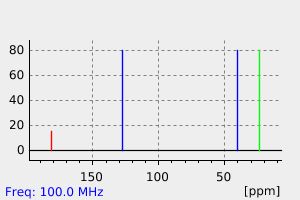代谢
... 五种可能的灭菌丹代谢物:1,2,3,6-四氢酞酰亚胺(THPI)、顺式-3-羟基-1,2,3,6-四氢酞酰亚胺(C3)、顺式-5-羟基-1,2,3,6-四氢酞酰亚胺(C5)、反式-3-羟基-1,2,3,6-四氢酞酰亚胺(T3)和反式-5-羟基-1,2,3,6-四氢酞酰亚胺(T5)...
... Five possible metabolites of captan: 1,2,3,6-tetrahydrophthalimide (THPI), cis-3-hydroxy-1,2,3,6-tetrahydrophthalimide (C3), cis-5hydroxy-1,2,3,6-tetrahydrophthalimide (C5), trans-3-hydroxy-1,2,3,6-tetrahrahydrophthalimide (T3), and trans-5-hydroxy-1,2,3,6-tetrahydrophthalimide (T5) ...
来源:Hazardous Substances Data Bank (HSDB)







